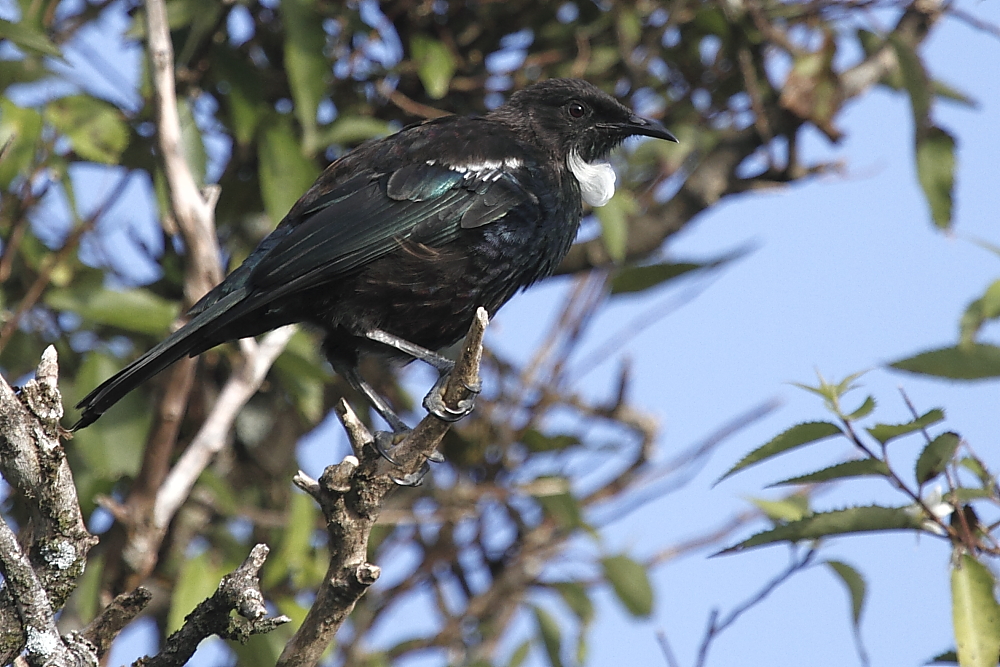Localisation
Stewart Island
New Zealand
Métadonnées
Marque Canon EOS 7D
Objectif Canon EF 100-400 mm f/4.5-5.6L IS USM
at 640 mm
Exposition 1/1000 s, f/6.3, ISO 500
Taille de l'image 800 x 534 pixels
Nom IOC
Deutsch Tui Dutch Toei
Italian Tui Spanish Mielero tui
Commentaires
257;ori name tūī and is the species' formal common name. At first glance the bird appears completely black except for a small tuft of white feathers at its neck and a small white wing patch, causing it to resemble a parson in clerical attire. On closer inspection it can be seen that tui have brown feathers on the back and flanks, a multicoloured iridescent sheen that varies with the angle from which the light strikes them, and a dusting of small, white-shafted feathers on the back and sides of the neck that produce a lacy collar. Tui are found through much of New Zealand, particularly the North Island, the west and south coasts of the South Island, Stewart Island, where the birds shown have been photographed. Populations have declined considerably since European settlement, mainly as a result of widespread habitat destruction and predation by mammalian invasive species. Nonetheless, the species is considered secure and has made recoveries in some areas, particularly after removal of livestock has allowed vegetation to recover. Predation by introduced species remains a threat, particularly brushtail possums (which eat eggs and chicks), stoats, the common myna (which compete with tui for food and sometimes takes eggs), and rats. They are one of the most common birds found in urban Wellington. They are usually seen singly, in pairs, or in small family groups, but will congregate in large numbers at suitable food sources, often in company with silvereyes, bellbirds, or kererū (New Zealand wood pigeon) in any combination. They are the main pollinators of flax, kowhai, kaka beak and some other plants. Note that the flowers of the three plants mentioned are similar in shape to the tui's beak.
Tui are considered to be very intelligent, much like parrots. They also resemble parrots in their ability to clearly imitate human speech and were trained by Māori to replicate complex speech Tui are also known for their noisy, unusual call, different for each individual, that combine bellbird-like notes with clicks, cackles, timber-like creaks and groans, and wheezing sounds. Songbirds have two voiceboxes and this is what enables them to perform such a myriad of vocalisations. Tui will also sing at night, especially around the full moon period.
|
| 25/03/2011 |
Méliphage tui |
Micheline JACQUEMIN
|
